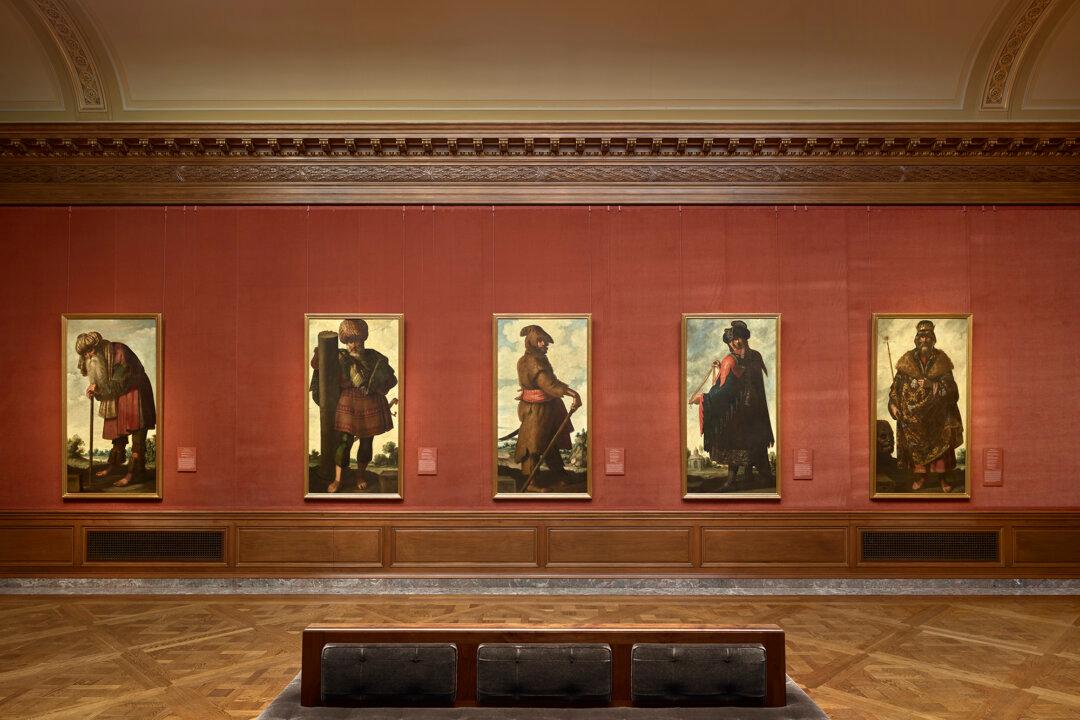NEW YORK—A mysterious and imposing family reunion is being exhibited at The Frick Collection with the Spanish Golden Age painter Francisco de Zurbarán taking center stage, while his fellow Andalusians Diego Velázquez and Bartolomé Esteban Murillo (both in the permanent collection) complement him on the sidelines. The exhibition “Zurbarán’s Jacob and His Twelve Sons: Paintings From Auckland Castle,” running until April 22, sports a series of 13 towering figures that wrap around the East Gallery. The original 13th painting is together with the rest of the series for the first time in over 260 years.
It’s an immersive experience relating to these legendary biblical figures (see virtual tour). They seem simultaneously remote and humble, yet uncannily present and commanding. At first glance, they look almost like playing cards—each wearing his own iconic outfit, playing off of one another. Taking a closer look, however, we see that the faces look quite realistic, with unique expressions and character.
“While the compositions were taken from prints [etchings], the faces were painted from life,” Susan Grace Galassi, senior curator at The Frick, explained in the East Gallery, packed with visitors, on Feb. 21. “I feel we are looking at contemporary Seville in these faces, and maybe even the members of Zurbarán’s workshop posed for the paintings,” she said.






